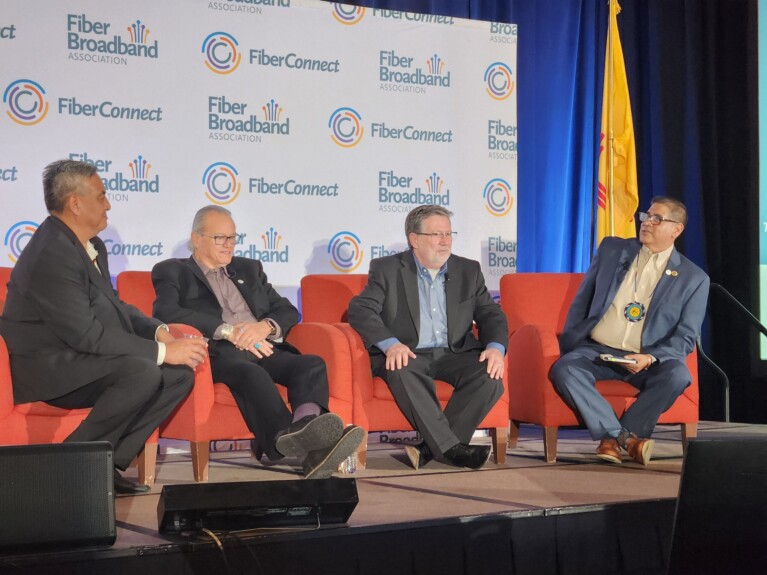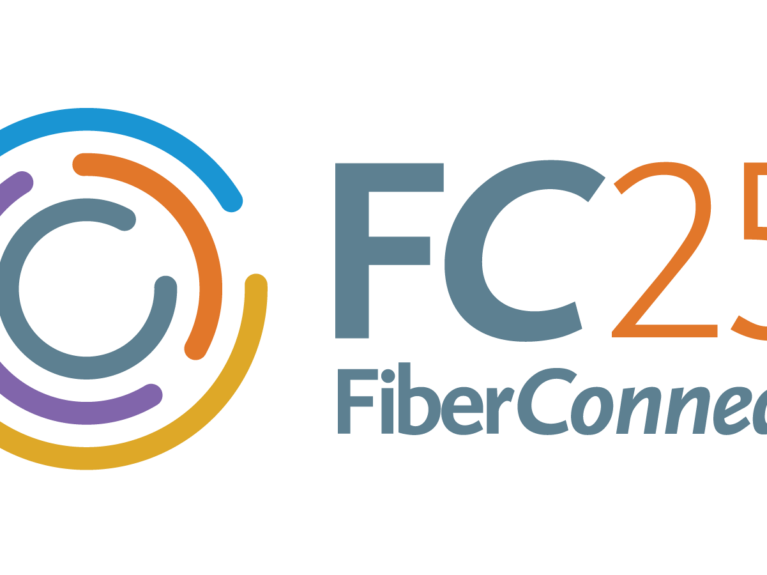Documenting The Economic Benefits of Fiber in 2024
Taken for granted in many circles, fiber is the backbone of America’s broadband technology ecosystem, enabling AI in data centers, cable and cellular networks, and yes, even satellite communications. Fiber’s resilience and security makes it the go-to for mission critical applications such as public safety and smart grid.
Reliable high-speed, low-latency fiber broadband connectivity drives economic growth and job creation around the country. Fiber’s ability to scale and deliver terabytes of data down a single strand boost the competitiveness of U.S. industries across the board, from agriculture to the factory floor. Building and maintaining fiber networks drives employment opportunities for construction workers and technicians, as well as create jobs in the fiber supply chain, including American-made fiber optic cable, conduit, and electronics.
In 2024, over 1,000 individuals from Fiber Broadband Association member companies participated in and contributed to one or more of the organization’s 17 committees, working groups, and roundtables. During the course of last year, FBA, its committees, and research partners published numerous documents examining the fiber industry, its technology, and the economic and social benefits that fiber delivers to communities across the United States and around the world.
A number of those documents described and analyzed the benefits of fiber in different ways, including general discussions on the benefits of retiring legacy copper plant, fiber’s scalability and longevity compared to other media, and gigabit fiber’s contributions to productivity. There are also case studies assessing the economic power of fiber in small towns and rural areas as well as a macro study estimating the large-scale impact of fiber upon the nation as a whole.
Retiring Copper, Scaling Fiber, Long-Living Fiber
The FBA’s Technology Committee published two documents in 2024 examining the general benefits of deploying fiber. “The Benefits of Retiring Copper Today” white paper discussed the economic challenges of legacy last mile networks operating on copper pairs or coaxial cable today. Incumbent providers of all sizes are already in the process of moving to all-fiber networks, looking to retire their legacy copper for increased reliability and lower operational costs.
Most legacy systems were built in the last century and require considerable labor and power to be operated and properly maintained. Further complicating the picture, as equipment has aged, so have the people who understand how to maintain it, with the companies that once made the systems and parts now have moved on to other products or have simply gone out of business. The workforce understanding legacy systems that remains becomes more expansive to retain with each retiring worker taking their knowledge with them.
The white paper analysis found that a move to an all-fiber network can save $54 per year per home passed when compared to hybrid fiber coax (HFC) networks and a whopping $91 year per home passed compared to legacy DSL equipment. Savings come through a variety of mechanisms, including better reliability translating into fewer truck rolls for repairs, lower power usage, and lower real estate costs as legacy equipment is removed and replaced with more compact, power-efficient fiber gear.
Removing the legacy copper can provide cost recovery through recycling, as the demand for copper for EV chargers and other applications keeps that metal in significant demand and its price high. AT&T and BT are among the Tier 1 service providers that have stated they are recycling their decommissioned copper.
Fiber has significant longevity compared to any other existing telecom technology. Fiber put into place in the early 1990s is still in use after over 35 years of service and are expected to continue to deliver broadband for decades to come, based on the materials, technologies, and manufacturing processes used to produce modern, high-quality optical fiber and fiber optic cable, according to findings in the “Fiber Broadband Scalability and Longevity” whitepaper, also published by the FBA Technology Committee last year.
More importantly, the medium of fiber has proven to be easily and rapidly scalable, with fiber deployed two decades ago to deliver hundreds of megabits of service now being used to deliver multi-gigabit symmetrical services over the same medium through electronics upgrades without replacing the fiber itself.
The ultimate speed for today’s fiber has yet to be determined, with demonstrations of 50 Gbps and 100 Gbps speeds to the home taking place in 2024 while high-speed core network speeds of 800 Mbps are coming into service today with near-term growth to multi-terabit speeds already on the horizon. A single strand of single-mode fiber deployed in the 1980s could be capable of carrying up to over 600 terabits per second. No other existing wired or wireless communications medium comes close to this capacity.
Fiber also delivers the best latency and jitter performance based on user measurements, according to an FBA/RVA 2023 Consumer Broadband study and cited by the Scalability paper. Median latency for fiber to the home is 30 milliseconds, far superior to any other wired or wireless alternative, with the industry working to further reduce delays by improving network congestion management.
Time is Money – The Case for Gigabit Speeds
Everyone hates to wait, but waiting costs money. More than a decade ago, Amazon found that every 100ms in latency cost the company 1% in sales, according to a piece on the Gigaspaces website, while an extra half second in search page generation time dropped traffic by 20%. Users will abandon applications if applications and sites take too long to load, while waiting for data to download and cloud applications to respond means less productivity in the course of the working day.
RVA Market Research and Consulting examined the relationship between higher bandwidth and greater efficiency in its white paper produced with FBA entitled “Gigabit Fiber Can Add $326B to U.S. GDP.” The paper conservatively estimated for a 100 Mbps/20 Mbps connection, about 11% of interactive time spent online was spent simply waiting, adding up to a productivity loss of almost 20 minutes per day, assuming 3 hours of interactive work moving around files and working with cloud services.
In comparison, a user with a high-speed connection delivering 600 Mbps average performance from a gigabit connection would only be waiting around 2 minutes per day, adding up to about 108 hours in productivity per year. Heavy interactive users, such as remote workers, would gain almost 32 more productive workdays annually.
The increased productivity through higher bandwidth would provide substantial value for remote workers who value their time as well as contributing to more GDP. Moving all home users from 100/20 Mbps service to gigabit fiber speeds would potentially add 1.2%, or around $326 billion to U.S. Gross Domestic Product because they’d get more work done than waiting for files to download and cloud services to load.
From Charlottesville to Across the Nation – Fiber’s Measurable Economic Benefits
There’s more than theoretical models to demonstrate the value of fiber. Two different sets of research generated in 2024 worked to quantify fiber’s impact and value in real world settings. FBA’s newly released “Fiber Anchors Sustained Economic Development: The Charlottesville Impact” study examined the transformative impact of fiber broadband in the Virginia town and surrounding area, underscoring its role as a catalyst for job creation, housing value growth, and digital entrepreneurship.
The findings underscore fiber’s potential to transform communities nationwide, providing critical insights as federal and state governments continue to invest in broadband expansion under programs such as the Broadband Equity, Access, and Deployment (BEAD) and Virginia Telecommunication Initiative (VATI).
Fiber broadband’s growth in Charlottesville over the past decade has contributed 35% of the city’s private sector job growth between 2015 and 2019, adding nearly 735 new jobs especially in professional, scientific, and technical industries. Availability of fiber broadband contributed to an estimated $4 million annual increase in housing values in the Charlottesville area, enhancing wealth for homeowners and while expanding the local tax base.
Small businesses are crucial to the economy, because they generate millions of new jobs and drive innovation as well as economic growth. A 2019 report from Small Business Innovation found that small businesses generate 44% of U.S. economic activity. Compared to other cities of similar size in Virginia, Charlottesville ranks highly in Digital Micro Business Density, a key indicator of small business health size, thanks to reliable, high-speed broadband enabling access to global markets.
Peer-reviewed findings supporting the positive economic benefits of fiber were published by the nonprofit Center on Rural Innovation (CORI). The “Beyond Connectivity: The Role of Broadband in Rural Economic Growth and Resilience” economic study published in September 2024 compares economic data from three types of rural communities: underserved communities, communities with access to basic broadband services, and communities served by smaller fiber broadband providers offering access to experiences that go beyond fast internet.
CORI examined the impact of fiber service providers Paul Bunyan Communications in Beltrami County, Minn.; Bulloch Solutions in Bulloch County, Ga.; and Blackfoot Communications in Gallatin County, Mont. The study, sponsored by Calix, NTCA-The Rural Broadband Association, and FBA, found a more significant economic impact in communities that are better connected and have access to additional services that allow users to effectively leverage that connection, while comparable underserved communities experience economic stagnation. Data was analyzed from 2020-2022 for the study and found that rural counties with high broadband adoption rates of over 80% have significant advantages over those with low usage.
Advantages of rural counties with high broadband adoption rates included 213% higher business growth, 10% higher self-employment growth, 44% higher GDP growth, and 18% higher per capita income growth. Numerous factors were involved in these results. Rural counties with high broadband use saw more businesses opening, while similar counties with low broadband utilization are losing businesses. On average, rural areas with low broadband usage lost three or more businesses each year.
With broadband access, the barriers to starting a business in rural areas are lowered significantly by connecting them to essential resources, like access to banks, small business loans, and venture capital as well as global markets. Broadband enables small business owners to conduct market research, leverage digital marketing strategies, and expand their customer base beyond their local physical area through e-commerce.
Finding the Research
Most of the publications cited above can be found through FBA’s website, fiberbroadband.org, at the Resources Menu under “Research.” Access to the full CORI report, Report: The role of broadband in rural economic growth and resilience – Center on Rural Innovation, can be found on the non-profit’s website for review and download.





